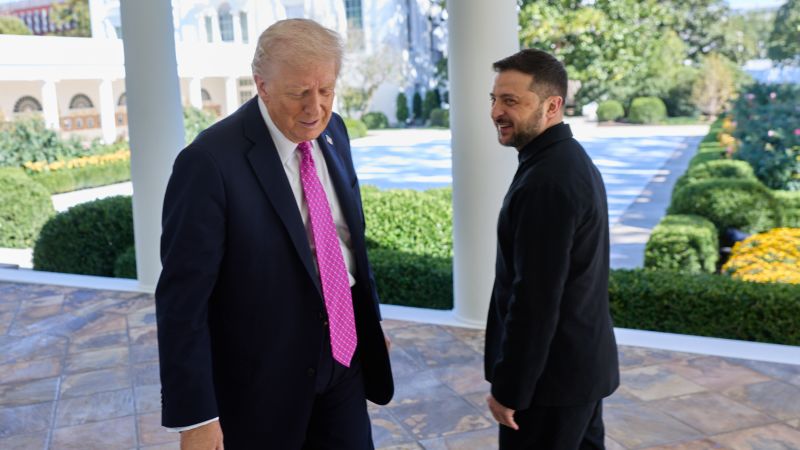Ukrainian President Volodymyr Zelensky left a meeting with former U.S. President Donald Trump on March 15, 2024, without securing the Tomahawk missiles he sought for potential strikes against Russia. Instead, Trump called for both Ukraine and Russia to cease hostilities and accept the current battle lines. Zelensky had visited Washington with the hope that these long-range cruise missiles could disrupt the Kremlin’s war economy by enabling targeted strikes on strategic energy facilities within Russia.
During a working lunch at the White House, Trump stated his desire to resolve the conflict “without thinking about Tomahawks,” emphasizing that the United States needs to retain this weapon for its own defense. Following the meeting, Zelensky described the discussions as “productive” but refrained from further comments on the missile issue, noting that the U.S. is cautious about escalating the situation.
Hours after their meeting, Trump reiterated his call for an immediate end to the violence. “You go by the battle line, wherever it is. Otherwise, it’s too complicated. You’ll never be able to figure it out,” he told reporters in West Palm Beach, Florida. “Both sides should go home, go to their families, stop the killing. And that should be it.” He also mentioned having communicated this sentiment to both Zelensky and Russian President Vladimir Putin.
The meeting followed a phone call between Trump and Putin, during which Putin reportedly argued that the Tomahawk missiles would not significantly alter the battlefield dynamics but could damage U.S.-Russian relations. Tomahawk missiles, with their extensive range, are capable of targeting major cities such as Moscow and St. Petersburg, making their potential deployment a critical point of contention.
Zelensky has been vocal about Ukraine’s need for Tomahawk missiles, which would greatly enhance its military capabilities. Prior to the White House meeting, he proposed a trade of Ukrainian drones for U.S. Tomahawks, stating, “Ukraine has thousands of our production drones, but we don’t have Tomahawks.” He expressed a willingness to collaborate with the U.S. in this regard.
In a subsequent briefing with European leaders, Zelensky received assurances of their continued support for Ukraine amid ongoing Russian aggression. The leaders reaffirmed their commitment to assisting Ukraine, emphasizing the need for unity against external threats. Zelensky added that he trusts Trump’s intentions to work towards ending the war, citing Trump’s previous success in managing Middle Eastern affairs.
Trump’s stance on territorial concessions has varied. While he suggested that “land swaps” might be necessary during a previous meeting with Putin in August, he later expressed confidence that Ukraine could reclaim all territories currently occupied by Russia. On the day of his meeting with Zelensky, he acknowledged the possibility that Putin may be delaying negotiations to further his war objectives but concluded that he believes Putin ultimately wants a deal.
The discussions underscore the complexities surrounding the ongoing conflict in Ukraine and the international diplomatic efforts aimed at achieving peace. As the situation evolves, the implications of these high-level meetings will likely continue to shape the geopolitical landscape.
